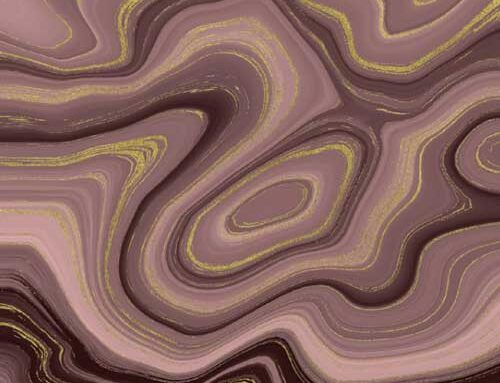
by Nicola Fiorente, MD, and Rocco Salvatore Calabrò, MD, PhD
Dr. Fiorente is with Polimedica Fisio & Sport in Cittadella (PD), Italy. Dr. Calabrò is with IRCCS Centro Neurolesi “Bonino-Pulejo” in Messina, Italy.
Funding: No funding was provided for this article.
Disclosures: The authors have no conflicts of interest relevant to the content of this article.
Innov Clin Neurosci. 2023;20(4–6):11–13.
Abstract
Music is an auditory stimulus of a complex nature, as many perceptive processes develop simultaneously in various areas of the brain. The same brain areas are involved in processing music and movement rhythms, which is why music can be used in the rehabilitation of movement disorders. There is growing evidence that music-assisted treadmill training can be effective in treating Parkinson’s disease (PD) gait disorders, as auditory cueing with treadmill training may specifically work on those motor areas, including the cerebellum, that are not affected by the disease. Thus, music-therapy, when properly applied, could pave the way for better management of motor symptoms in PD.
Keywords: Neurodegenerative disorders, neurorehabilitation, music therapy
The sirens are now deafening: Pangloss is not well! The so-called Spanish flu of 1918, with its dramatic sequence of encephalitis lethargica and Parkinsonism, stands as a sad memo in this period affected by the COVID-19 pandemic. Many neurodegenerative disorders, including Parkinson’s disease (PD), have increased due to population aging.1 Although it is acknowledged that no therapy can slow down or arrest the progression of PD, we should still be aware of new insights into the genetic causes and mechanisms of neuronal death, as well as the several promising strategies that are being tested for their disease-modifying potential.2 However, despite the commitment of scientists in many areas of research, there is no silver bullet on the horizon; more than six million people are affected by PD worldwide, which will have a big impact on the world to come and pose a challenge for health systems.3
Nonetheless, the scientific community is not fighting the dragon with its bare hands! Neurorehabilitation is becoming an “adult science,” a complex medical process which aims to aid recovery from nervous system injuries and minimize and/or compensate for any functional alterations resulting from them.4,5 The concluding remarks of a recent chapter on rehabilitation in movement disorders6 points out that pharmacologic and surgical treatments are not fully effective and ultimately do not allow satisfactory function, restoration, or return to predisease conditions. Comprehensive, multidisciplinary programs of rehabilitation can add substantial benefits and therefore must be considered as an integral part of the treatment of movement disorders. A large amount of data suggests that effective rehabilitative interventions should incorporate multidisciplinary training, as well as aerobic practice. The former serves the purpose of addressing the variety of symptoms of these diseases, while the latter can boost plasticity-related phenomena and funnel them in the right direction.6 But can music have a role in the management of patients with PD? And how could this be better used to potentiate patients’ gait and posture?
Exercise is the key: intense, repetitive, and task-oriented exercise can lead to better results when coupled with music. Aerobic exercise increases the brain’s volume of both gray matter (actual neurons) and white matter (connections between neurons). Through increased blood flow to the brain, physical exercise triggers biochemical changes that spur neuroplasticity, the production of new connections between neurons and even of neurons themselves. Patients with PD demonstrate a progressive loss of dopamine neurons in the substantia nigra. Research has shown that just two months of exercise can lead to the growth of brain cells in patients with PD; higher levels of exercise were significantly more beneficial than lower levels, but any amount of exercise was better than not exercising at all.7
PD deeply affects automatism in movement execution, and the loss of automaticity and rhythmicity makes the rhythm of regular walking difficult for patients and constitutes a heavy stigma in social life. The use of a treadmill, a widespread tool for aerobic exercise, has gained a central role in PD rehabilitation.8 Indeed, the early use of a treadmill may promote maintenance of muscle tone, improved aerobic capacity, muscle strengthening, and improved balance, resulting in a lower risk of accidental falls. It also works as an external stimulus, inducing a constant, rhythmic, horizontal movement while walking and improving neuronal plasticity.
However, conventional treadmill training often only partially targets motor symptoms, but in a multidimensional disease, such as PD, the loss of automaticity, rhythmicity, velocity, and effectiveness of actions requires cognitive involvement by patients. This results in an increased cognitive load, increased risk for errors/failure, and fatigue. Approaches that consider patients’ limitations and help to bypass the deficient networks seem to be especially promising. One of these approaches is rhythmic auditory cueing (RAC), which eases the initiation and continuation of repetitive sequential movements by providing an external temporal auditory stimulus (e.g., metronome, music, clapping).9–11 Besides the aforementioned effects on automaticity and rhythmicity, RAC-associated gait training in combination with visual feedback is considered as a dual-task cognitive–motor training. This allows therapists and patients to take advantage of a cognitive–motor strategy bypassing deficient neuronal circuit.9
External stimulus? RAC? Rhythmic movement? All that sounds familiar, and there is now great evidence as to why music adds something more to RAC. “Music has power” is the motto of the Institute for Music and Neurologic Function, where Concetta Tomaino, with her 30-year cooperation with the neurologist Oliver Sacks, is Executive Director.
Nowadays clinicians are surrounded and supported by functional magnetic resonance imaging (fMRI), electroencephalogram (EEG), noninvasive brain stimulation, robotics, and other emerging technologies, but it is always useful to remember the starting points; simple things, like music, still have their importance in medicine and rehabilitation.
Music pieces consist of time sequences (rhythms) of frequency events (tones) organized in a series (melody) and in parallel (harmony); the brain processes information through mechanisms that codify time and frequency through series circuits and parallel circuits. The acoustic modes with which musical pieces are created synchronize with the neuronal codes involved in frequency and rhythm, as a result inducing a variety of extra-musical brain responses (neurophysiological studies), including vegetative, emotional, and motor responses. Rhythm contributes to coordinated, well-timed movement that is highly recognized by the neurological system. Neuroimaging studies have revealed heightened motor areas in people listening to rhythmical music.10
Music is an auditory stimulus of a complex nature, and many perceptive processes develop simultaneously in various areas of the brain. The same brain areas, which includes the premotor area, supplementary motor, cerebellum (auditory-motor rhythm synchronization), and basal ganglia (putamen: rhythmic sequencing, beat feeling), are involved in processing music and movement rhythms.11
Patients who lose their internal ability to control movements may benefit from external suggestions or cues to help reroute neurologic signals and improve movement to the level where it regains its automaticity. Gait rehabilitation in patients with PD is aimed at restoring the cerebral mechanisms that generate a regular walking rhythm.12
Music has shown powerful results as an auditory cue during rehabilitation, providing stimulation for the creation of new pathways (neuroplasticity).13,14
The tempo of a music piece, a metronome, or rhythmic hand clapping can be used as cueing techniques to improve gait performance.13,14 It is known that using high-tech in the rehabilitation field can be more effective with augmented feedback, such as visual or acoustic cues. The latter include more engaging tools, such as informed music, which is widely distant from the old, boring metronome and can build new, efficient functional pathways in a damaged brain,15 as well as provide patient involvement. Involvement often means pleasure, but, at the first evaluation, we must verify whether music is appreciated by the patient, their musical background, and the cultural influence of genres to further potentiate the rehabilitation power of music-assisted therapy. In particular, music-assisted treadmill training (MATT) is receiving growing attention in the scientific literature. An article by Calabrò et al12 suggests that MATT may be a useful add-on to a gait rehabilitation strategy in PD, as auditory cueing can specifically target motor cortical beta frequency range synchrony during steady-state treadmill walking in patients with PD. This modulation has achieved higher clinical improvement following experimental gait training with music, compared to conventional training. Notably, the extensive oscillatory recruitment may represent a bypass of the damaged circuitry of internal pacing by part of a broader network encompassing the cerebellum and different cortical areas.12 In this scenario, the cerebellum may integrate sensorimotor information to generate internal models for predictive motor control, although it should be verified whether these neural responses are specific only to action-related sounds that have a learned auditory-motor mapping. This association allows motor preparation or rehearsal, which are fundamental to regain motor function and improve motor performance, consistently with the neuroplasticity-inspired principles of motor (re)learning.16
Are we then heading in the right direction? Great question! Clinicians are getting used to the new paradigm of patient-centered care, which considers patient preferences, needs, and values, ensuring they guide all medical decisions in tandem with scientific evidence.15 The introduction of pleasure as an important factor during the rehabilitation training is useful and natural. Patients with PD have low levels of dopamine, a well-known neurotransmitter that increases with rewards and pleasure, and enhancing pleasure and motivation may boost dopaminergic pathways. What about the sense of reward connected to walking correctly assisted by music or singing alone or, better, in a choir or dancing? Those are big questions too, that need an answer and further investigation.
In the meantime, stay tuned: the right music is yet to come.
Acknowledgments
This commentary aims to be a tribute to the memory of Jamie Reiss. He dreamed of MATT and its power, prompting clinical research. Last year left us singing alone. Don’t worry, Jamie, the music you dreamed is walking with us.
The authors wish also to thank Prof. Agata Grosso for English editing.
References
- Deuschl G, Beghi E, Fazekas F, et al. The burden of neurological diseases in Europe: an analysis for the Global Burden of Disease Study 2017. Lancet Public Health. 2020;5(10):e551–e567.
- Bloem BR, Okun MS, Klein C. Parkinson’s disease. Lancet. 2021;397(10291):2284–2303.
- GBD 2016 Neurology Collaborators. Global, regional, and national burden of neurological disorders, 1990–2016: a systematic analysis for the Global Burden of Disease Study 2016. Lancet Neurol. 2019;18(5):459–480.
- Krucoff MO, Rahimpour S, Slutzky MW, et al. Enhancing nervous system recovery through neurobiologics, neural interface training, and neurorehabilitation. Front Neurosci. 2016;10:584.
- Ruiz-González D, Hernández-Martínez A, Valenzuela PL, et al. Effects of physical exercise on plasma brain-derived neurotrophic factor in neurodegenerative disorders: a systematic review and meta-analysis of randomized controlled trials. Neurosci Biobehav Rev. 2021;128:394–405.
- Ferrazzoli D, Ortelli P, Iansek R, Volpe D. Rehabilitation in movement disorders: from basic mechanism to clinical strategies. Handb Clin Neurol. 2022;184:341–355.
- Physical exercise: why aerobic exercise enhances neurogenesis and neuroplasticity. SharpBrains. https://sharpbrains.com/resources/2-the-4-pillars-of-brain-maintenance/physical-exercise-why-aerobic-exercise-enhances-neurogenesis-and-neuroplasticity/. Accessed 5 Apr 2023.
- Mehrholz J, Kugler J, Storch A, et al. Treadmill training for patients with Parkinson’s disease. Cochrane Database Syst Rev. 2015;(9):CD007830.
- Goosses M, Saliger J, Folkerts AK, et al. Feasibility of music-assisted treadmill training in Parkinson’s disease patients with and without deep brain stimulation: insights from an ongoing pilot randomized controlled trial. Front Neurol. 2020;11:790.
- Grahn JA, Brett M. Rhythm and beat perception in motor areas of the brain. J Cogn Neurosci. 2007;19(5):893–906.
- Nombela C, Hughes LE, Owen AM, Grahn JA. Into the groove: can rhythm influence Parkinson’s disease? Neurosci Biobehav Rev. 2013;37(10 Pt 2):2564–2570.
- Calabrò RS, Naro A, Filoni S, et al. Walking to your right music: a randomized controlled trial on the novel use of treadmill plus music in Parkinson’s disease. J Neuroeng Rehabil. 2019;16(1):68.
- Thaut MH, McIntosh GC, Rice RR, et al. Rhythmic auditory stimulation in gait training for Parkinson’s disease patients. Mov Disord. 1996;11(2):193–200.
- McIntosh GC, Brown SH, Rice RR, Thaut MH. Rhythmic auditory-motor facilitation of gait patterns in patients with Parkinson’s disease. J Neurol Neurosurg Psychiatry. 1997;62(1):22–26.
- Fiorente N, Calabrò RS. Beyond robotics and virtual reality: it’s time to go back to the patient! Innov Clin Neurosci. 2021;18(7–9):8–9.
- Naro A, Pignolo L, Bruschetta D, Calabrò RS. What about the role of the cerebellum in music-associated functional recovery? A secondary EEG analysis of a randomized clinical trial in patients with Parkinson disease. Parkinsonism Relat Disord. 2022;96:57–64.





